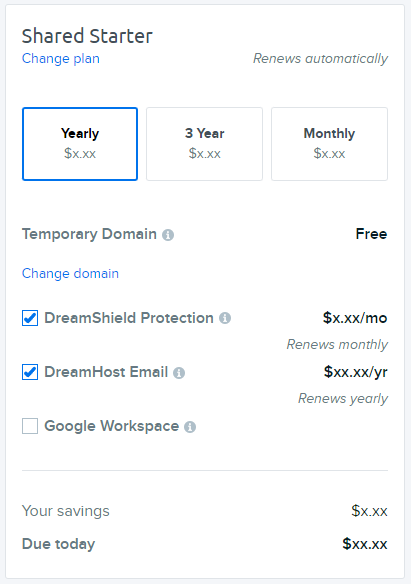It’s tough to find the best web hosting when you don’t know where to start. A slow or unreliable host can cause downtime and lost visitors. That’s a huge problem!
The problem gets worse if your business depends on online sales. That’s why you need a host that’s fast, reliable, and budget-friendly.
But, how to choose the best web hosting for your website? Don’t worry! We’re here to cut through the noise and help you find the best web hosting for your website.
Ready to ease your worries? Continue reading!
Affiliate Disclaimer: I earn commission (get paid) if you click on the links and purchase a product below. My earnings do not impact the price you pay.


What is Web Hosting?
Web hosting is the service that makes your website accessible on the internet. It stores your site data on a server. When someone types your URL, the server delivers your site to their browser.
There are different types of hosting.
Shared hosting is the most affordable, where multiple sites share the same server. VPS hosting divides a server into virtual servers for more control and resources.
Dedicated hosting offers an entire server for your site alone, perfect for high traffic. Cloud hosting uses multiple servers to provide flexibility and reliability.
Key Factors to Consider When Choosing Web Hosting
So, you know web hosting is important. But what should you look for? Here are the key factors to consider:

Speed and Performance
First things first: speed. A slow website is a bad website. Users hate waiting, and search engines don’t like it either.
Look for a hosting provider with fast servers and reliable infrastructure. Some great options include: HostGator, SiteGround, and DreamHost.
Uptime Guarantee
You want your website to be up and running all the time, right? That’s where uptime comes in. A good hosting provider will offer a high uptime guarantee, like 99.9% or even higher.
Here’s a table comparing the uptime guarantees of popular hosting providers:
| Hosting Provider | Uptime Guarantee |
| HostGator | 99.9% |
| SiteGround | 99.99% |
| DreamHost | 100% |
| Hostwinds | 99.9999% |
| GoDaddy | 99.9% |
Customer Support
Reliable customer support is essential, especially for beginners. You’ll need quick responses to technical issues that could impact your site.
Look for hosts that offer 24/7 support via live chat, email, or phone. HostGator, Bluehost, and InMotion Hosting are excellent for responsive customer service.
Security Features
Don’t let bad guys ruin your day. Make sure your hosting provider offers security features like SSL certificates, firewalls, and malware scanning.
SiteGround, Bluehost, and A2 Hosting provide robust security features to protect your site from threats. They also include daily backups, DDoS protection, and auto-updates.
Scalability
As your website grows, you’ll need a hosting that allows easy upgrades. Scalability ensures you can seamlessly switch from shared hosting to VPS or dedicated servers as traffic increases.
Hosting providers like Hostinger, SiteGround, and Bluehost offer flexible plans with scalable solutions to match your needs.
Pricing
Pricing can vary widely between hosting providers. It’s important to find a balance between affordability and features. Here’s a comparison of the pricing structures:
| Hosting Provider | Starting Price (Monthly) | Best For |
| Hostinger | $2.99 | Budget-friendly with good speed |
| SiteGround | $3.99 | Performance and customer support |
| Bluehost | $2.95 | Beginners and WordPress users |
| A2 Hosting | $2.99 | Speed and flexibility |
Compare different providers and find the best value for your money. Remember, cheap isn’t always bad, but it might mean you’re sacrificing quality.
Types of Web Hosting and Which One is Right for You
As we’ve mentioned earlier, there are four different types of web hosting. Let’s break down the different types and see which one is the perfect match for your website.

Shared Hosting
Shared hosting is the cheapest option. It’s perfect for small websites and new users. Many websites share the same server, so it’s affordable.
But, you might have slower speeds when many people visit your site. If you have a small blog or business, shared hosting is a good choice.
Popular shared hosting options include Hostinger, Bluehost, and HostGator. They offer plans for less than $3 a month.
VPS Hosting
Virtual Private Server (VPS) gives you more control and resources since your site gets its own virtual space on a server. It’s perfect for websites that are growing and need more power.
With VPS, you can install software, change server configurations, and handle more traffic. Some good VPS hosting companies are InMotion Hosting and A2 Hosting.
Dedicated Hosting
For big websites that need a lot of power and control, dedicated hosting is the best choice. You get the whole server just for your website.
This is great for big online stores or websites with lots of visitors. Check out Liquid Web and SiteGround for dedicated hosting options.
Cloud Hosting
Cloud hosting is ideal for websites experiencing fluctuating traffic. It offers flexibility and scalability, as resources are spread across multiple servers.
If one server fails or gets overloaded, another automatically steps in to keep your website running smoothly.
That’s why cloud hosting is a reliable and scalable option. Leading cloud hosting providers include Cloudways and Amazon Web Services (AWS).

Download Your Free e-Book
5 Simple Ways to Create Website & Landing Pages
How to Sign Up for a Web Hosting Provider
Above, we’ve named some top web hosting providers of different types. For the step-by-step walkthrough, we’ll use DreamHost, as an example. Moving forward!
Go to the DreamHost Website
Visit the DreamHost website and navigate to the “Web Hosting” section. You’ll see various hosting plans based on your needs, such as shared, VPS, or cloud hosting.

Select a Plan
Choose the plan that suits your website’s requirements. For beginners, the shared hosting plan is a great choice. Click on “Sign Up Now” to proceed.

Set Up Your Account and Domain
You’ll be prompted to create a DreamHost account. Enter your email, set a password, and choose a domain name.
If you don’t have a domain, you can register a new one. If you already have a domain, use the existing one.

Complete Payment and Start Hosting
Review your plan, add any additional features like SSL certificates or privacy protection, then proceed to payment.

Once payment is complete, you will receive a confirmation email. Complete account setup and login. Access the control panel to manage your website and start hosting.
Conclusion
That all wraps it up! Your web hosting choice impacts performance, security, and growth. Need shared hosting for a small site? Or a robust VPS or cloud solution?
Choose wisely now to avoid further headaches later. Focus on speed, uptime, support, security, and scalability.
Okay to go? Explore hosting plans. Compare options, and reach out to providers for clarifications. Don’t be afraid to ask questions!
Your website’s success begins here!






